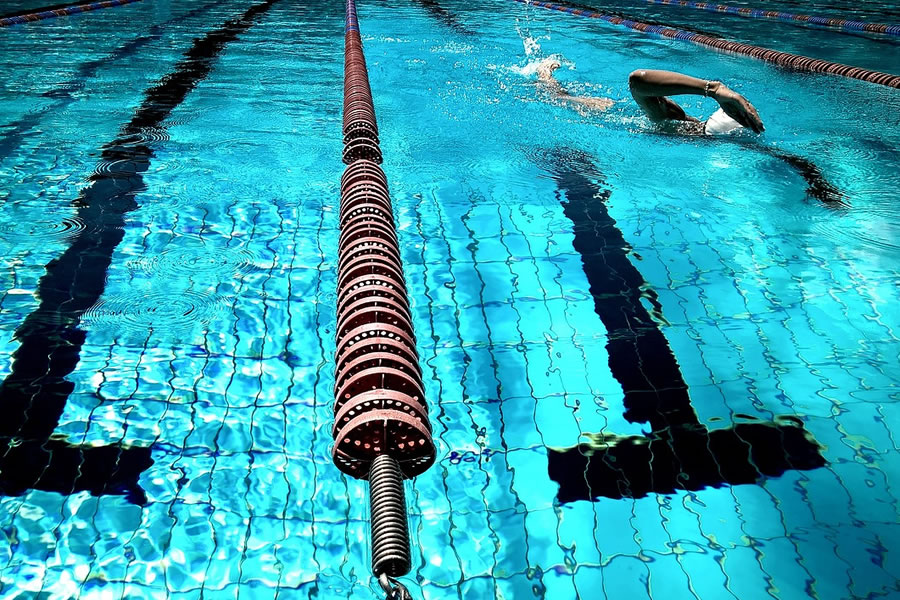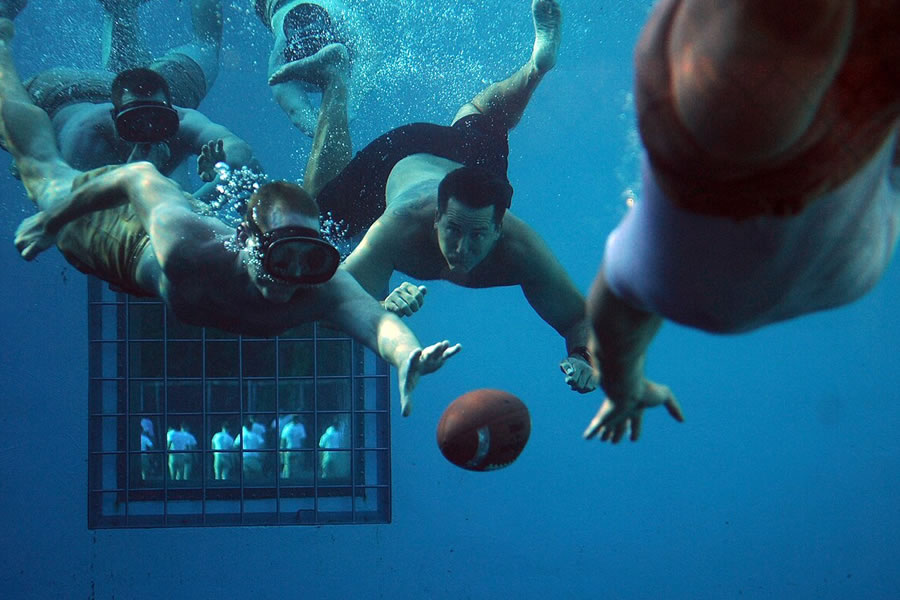🏈 Training Similarities: How NFL players benefit from swimming workouts

Swimming is one of the most complete sports, since it involves most muscle groups and in addition to having its own rules and competitions, it can be used as a physical activity to complement and vary training, as in American football, where players they can improve their performance and improve their performance train to prevent or recover from injuries. Russel Wilson once said “I love being in the water, in the pool. I think that helps a lot getting your body back. That’s a big thing for me.” Wilson has been playing at the top level for more than decade so it’s obviously a tried and trusted method. The Denver Broncos are currently on a winning streak, with Wilson playing a starring role. They’re still seen as huge outsiders to win the Super Bowl in the NFL odds but Wilson will be hoping is recovery time spent in the pool will help to end the season in the strongest possible way.
Among the main benefits of swimming and aquatic and underwater training for athletes are the following:
Low Impact
Aquatic exercise is a low-impact activity, ideal for strengthening muscles without running a high risk of injury, as it takes pressure off the bones and joints. Running or moving in the water, using all your resistance to your advantage, is highly recommended to gain muscle.
More Resistance
Submerged movement improves lung resistance and tones the muscle. Additionally, water exercise improves heart health and may have stress-reducing effects. Even those who don’t know how to swim can do shallow walks or arm exercises.
Also it´s possible combine swimming training with underwater exercises, as some of the best players have done: Russel Wilson, Justin Pugh, Josh Cribbs and Joe Thomas, NFL stars who have a Secret Passion For Swimming and Underwater Sports and who have incorporated swimming and freediving exercises such as cross-training exercise to improve their performance on the field.
In 2015, Brett Fischer owner/founder of the Fischer Institute in Phoenix, Arizona who is also a licensed physical therapist, sports trainer and certified strength and conditioning specialist published his work “Pool recovery: Water exercises for maximum growth” after training 14 NFL stars in their preseason for that year.
In his article he published several recommendations for swimming and pool training for NFL players.
- Water temperature
Use a relatively warm pool; ideally between 78 and 84 degrees Fahrenheit. - Pool depth
Do exercises mainly in water levels that are at chest height to properly “unload” the body. Buoyancy at chest height will reduce stress on the body during your pool workout. - Session time
To properly activate the body’s aerobic system, 20 to 40 minutes of continuous work of light to moderate intensity is needed. Working longer than 45 minutes to an hour will cause more fatigue and muscle soreness. - Training Intensity
As mentioned before, light to moderate intensity is needed to utilize the body’s aerobic system. Using the aerobic system is essential because it increases blood flow to the muscles and also eliminates metabolic waste. A good recommendation to know that you are training in this aerobic zone is that the person exercising can still maintain a normal conversation without losing their breath. - Parts of the body involved and movements to be performed.
It is important to incorporate all parts of the body with all types of movements. For example, NFL athletes can train in the pool for 40 minutes straight doing exactly the same movements that will be required of them in the NFL, combining movements such as jumping over short distances, agility movements, stepping back and, working with weights in the water.
Adding these workouts sessions in the pool with swimming series in the classic styles: crawl, backstroke, breaststroke, butterfly, as well as underwater series, freediving and finswimming will not only make the body feel better, it will achieve a better preseason or recovery after each game, but also releases the psychological tension for this high-level athletes by offering them fun in the water.
Other Colective Aquatic and Underwater Sports
In addition to the swimming exercises, NFL football players and other team sports such as traditional soccer, basketball, rugby and hockey can do training in some of the variants of these sports that are carried out in the water or under the water and where the objective of collective sports of scoring goals or scores on the opposing team’s field is shared.
Among these sports, the best known and included in the Olympic Games is water polo, but there are also underwater sports organized by the World Confederation of Underwater Activities (CMAS) such as Underwater Hockey and Underwater Rugby and they have their own rules and World and International Championships.
There is also underwater soccer, although it is not an internationally recognized sport, but it has been practiced in some universities, such as in 2019 in the pool at the University of Manitoba in Canada as a wellness and underwater therapy activity or as the practice made in Panama City, Florida (USA) 2011 by Students at the Naval Diving and Salvage Training Center playing underwater football to cool down after physical training.

(U.S. Navy photo by Mass Communication Specialist Abraham Essenmacher/Released)
Another sport that combines swimming and similar training for NFL players is the “Underwater Torpedo League” where the objective of the game is to take an underwater torpedo to the opposing team’s field.
After seeing all the benefits of swimming training and the alternatives that exist for NFL players, there are no longer excuses to get into the pool and do some strokes, kicks or try some of these fun underwater sports and games.
Last Updated on December 12, 2023

